Nishi Nippori Station among the other Yamanote line station, is a young station born after the Tokyo Olympic Games. It is a rugged construction excavated deep underground and connected with the Chiyoda Line, with a firm steel roof frame and a wide platform. It is a place that preserves the atmosphere of the high economic growth period of Japan.People have been living on the land alongside the station since ancient times. The giant tree and Kaguraden, which is a part of the shrine to perform the sacred dance, in Suwa Shrine are the symbolic existence of it. It is also a place that exists side by side with the accumulation of historical times in Japan. Visiting the shrine and participating in the festival is an opportunity to celebrate the memory of the deceased and to be aware of the events of the larger time scale beyond the one in which we live. In order to understand this abstract existence, which is not readily apparent in the physical world, the materiality of the shrine and the manner of visiting it becomes important. By exploring the idea of the station becoming a base for new exchanges through diversity that is expanded to the historical time scale, the station may gain the materiality and the way to worship a shrine. Looking at station as the center of interaction between various people, if the station contain the materiality and form of a shirne, is it possible for its diversity to be extended into historical time scale? The heavy steel roof frame is changed to a traditional wooden frame. The moment in which one waits for the train on the platform covered with steel changes to a moment where people can feel the materiality of the wood as well as the handcraftsmanship that shaped it. A Kaguraden is installedat the center of the wide platform. The space is covered by large ceramic roof tiles to create a generous waiting space and also brings changes to the city scenery. The material of the wall of the transit circulation path from Chiyoda line to Yamanote line is switched rhythmically between stone and wood and is overlaid to the sequence followed when visiting the shrine. These interventions turn the experience of transit into an opportunity to feel natural materials and perceive the light.
Nishi-Nippori / Station as a Shrine
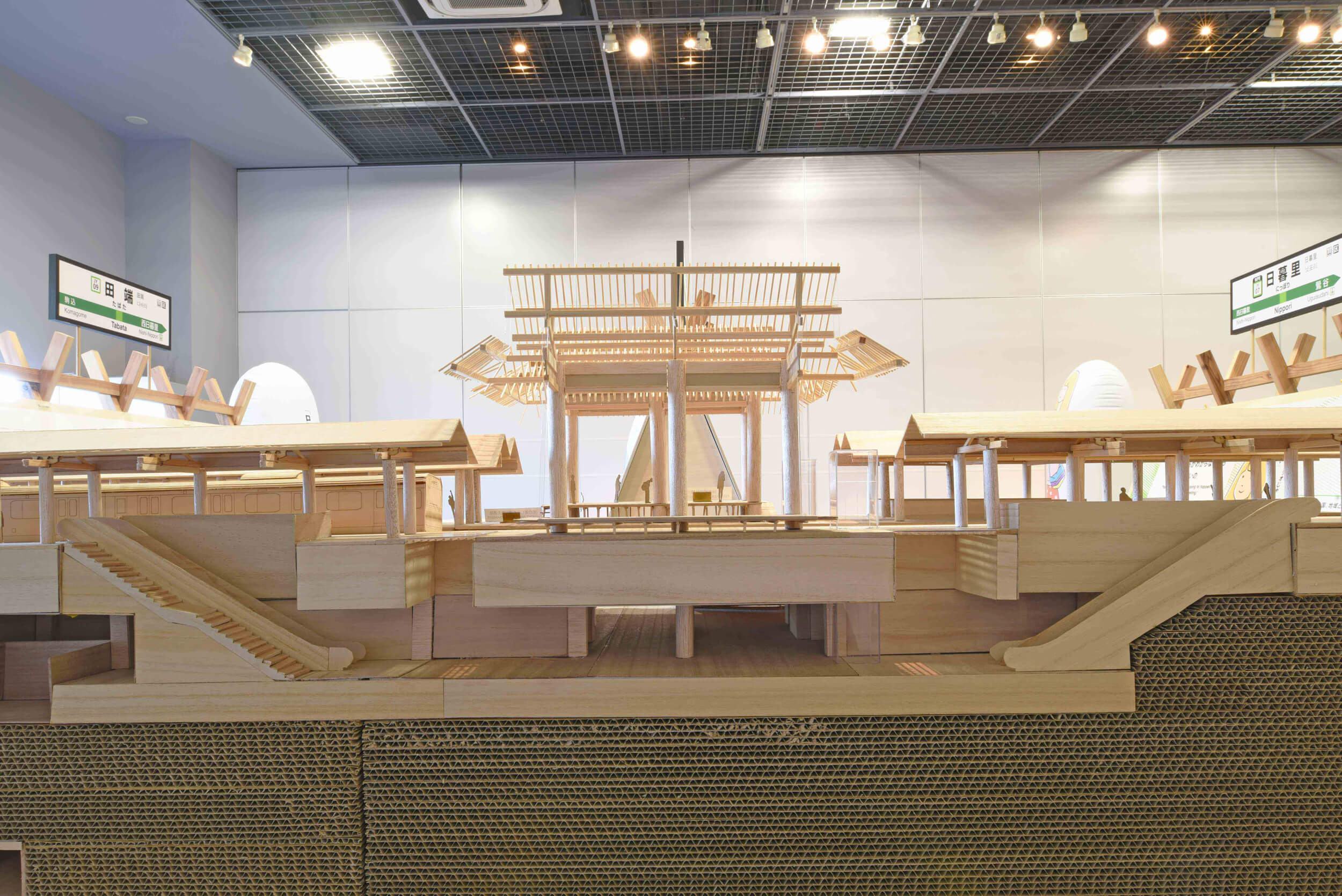
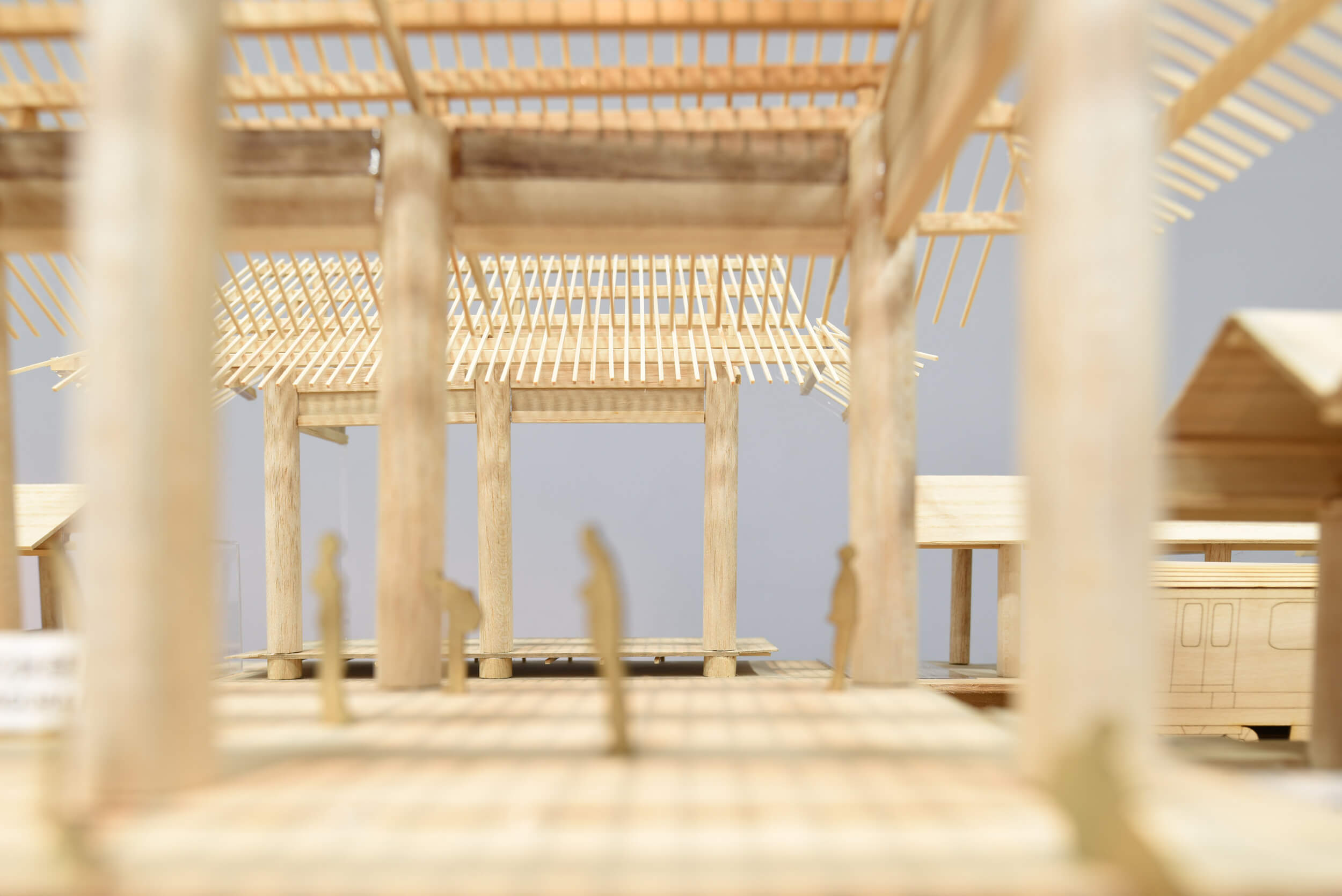
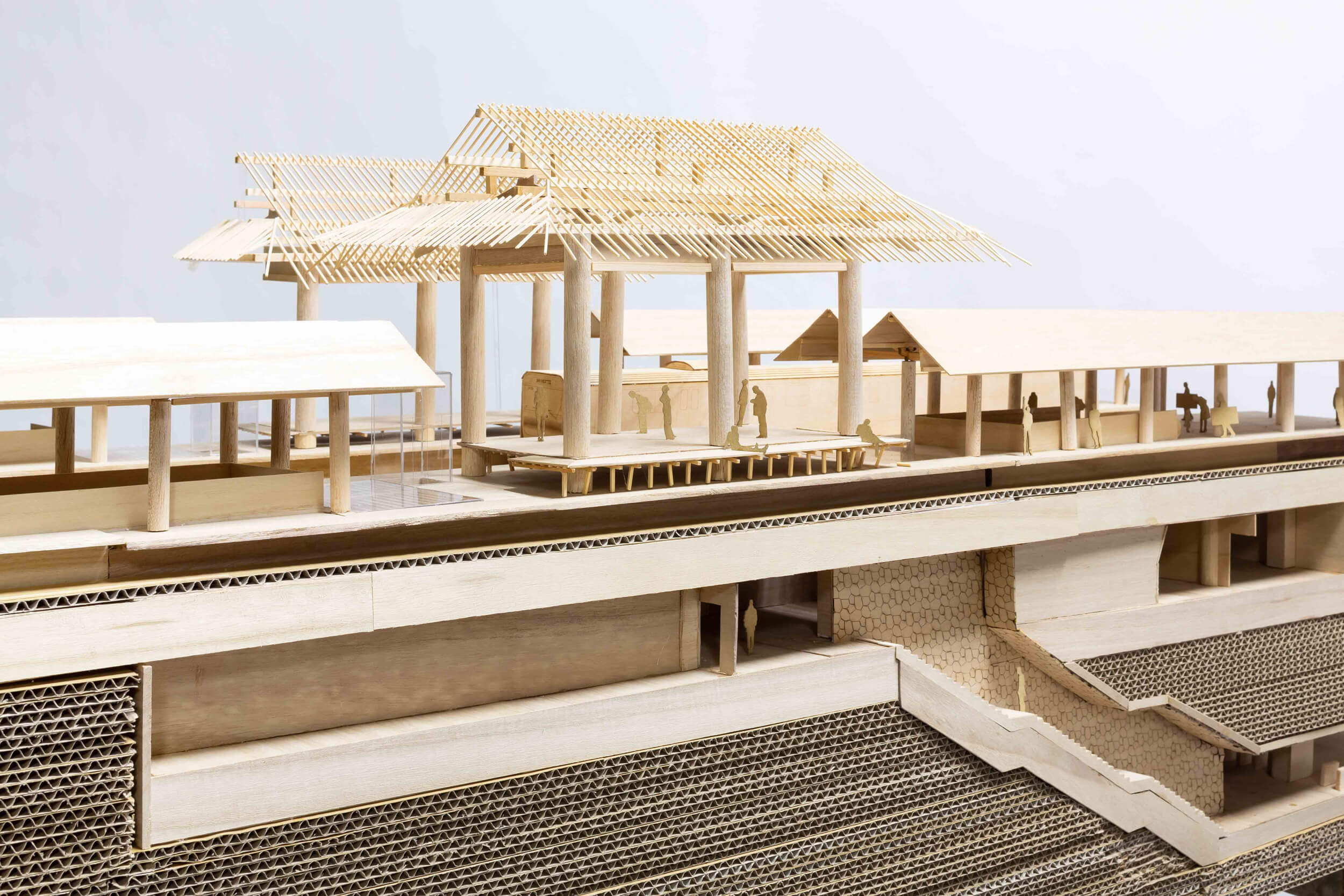
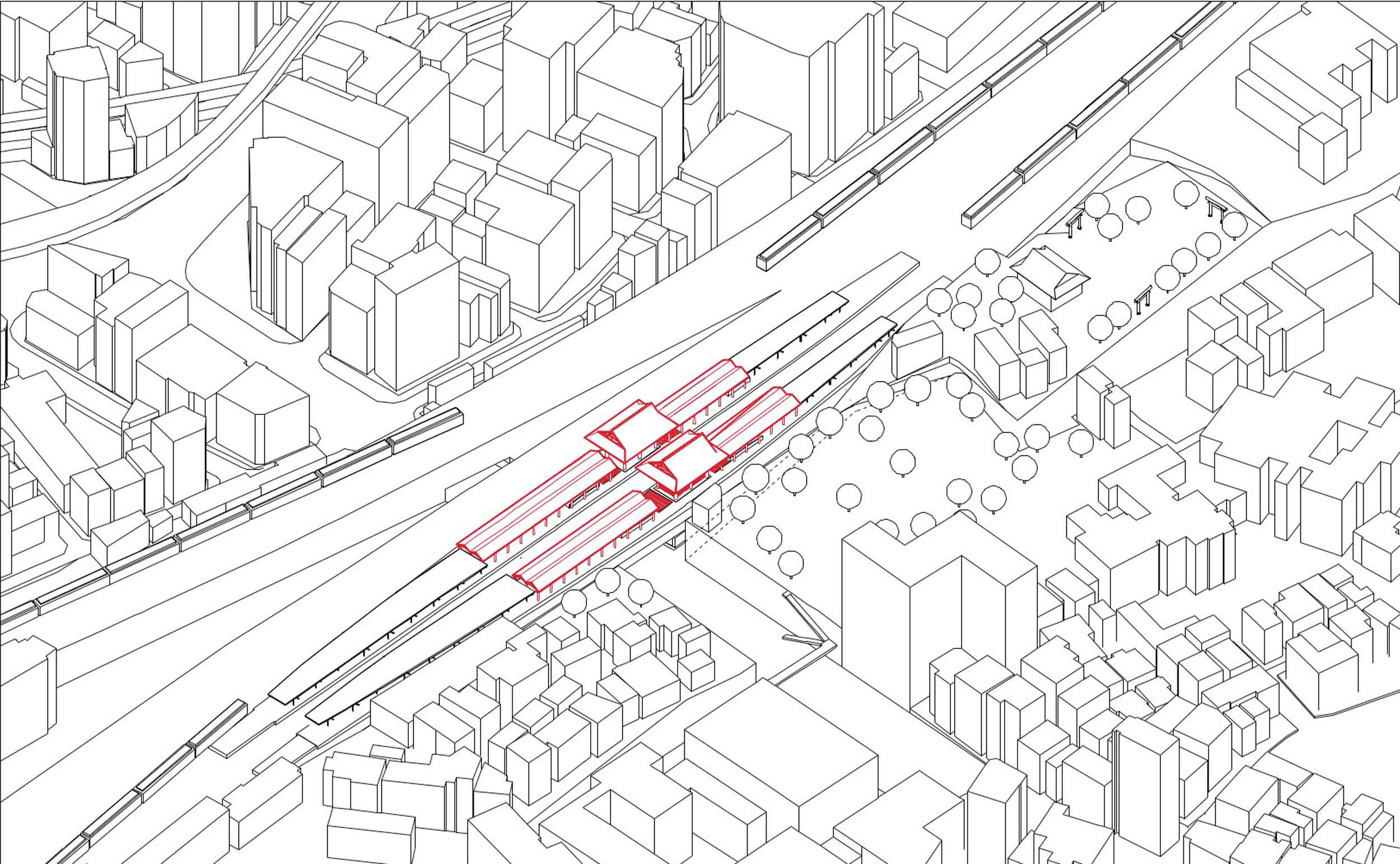
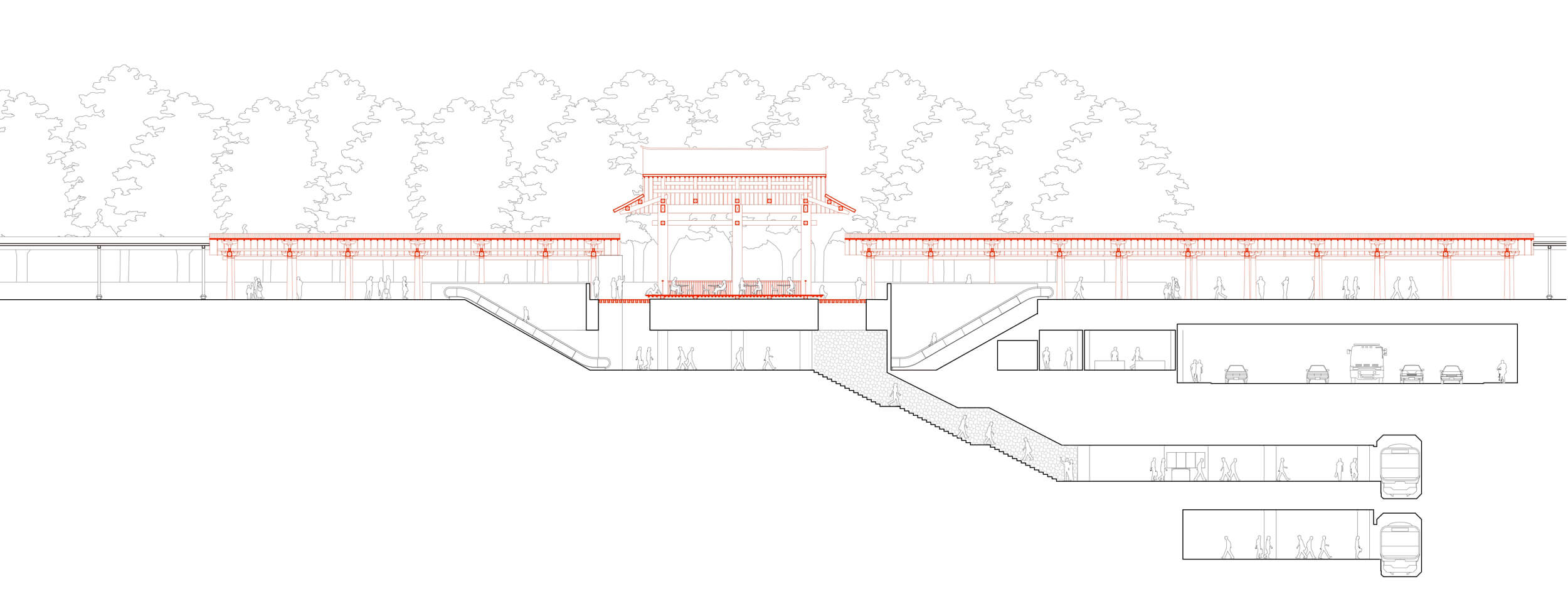
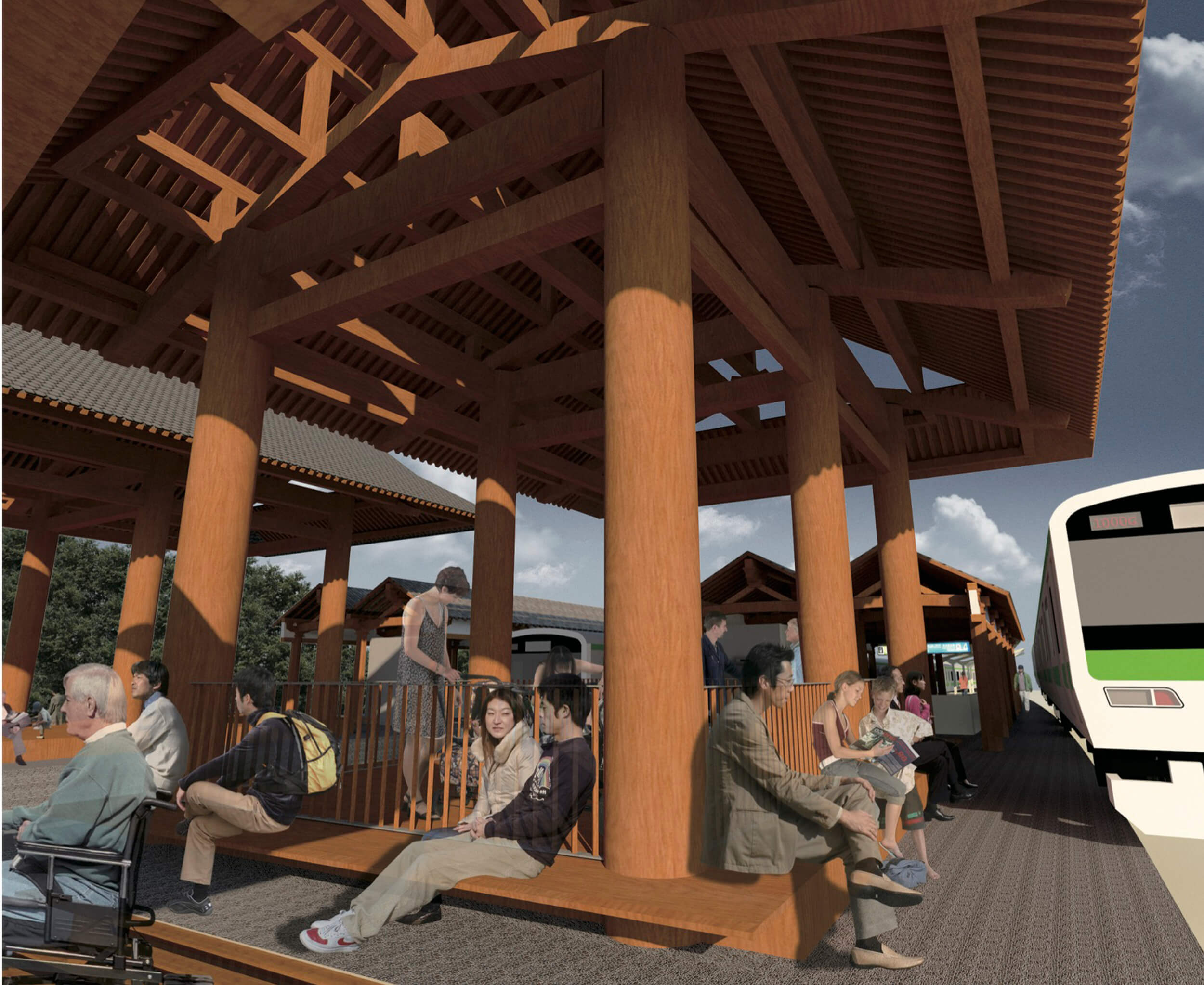
Project
Students
Teacher
Class
Type
Year
Nishi-Nippori / Station as a Shrine
Chinami TakahashiGuan XinRyusuke KoizumiYuka Tose
Sheila Kennedy
2018_Yamanote-line Lab
–
2018 2Q